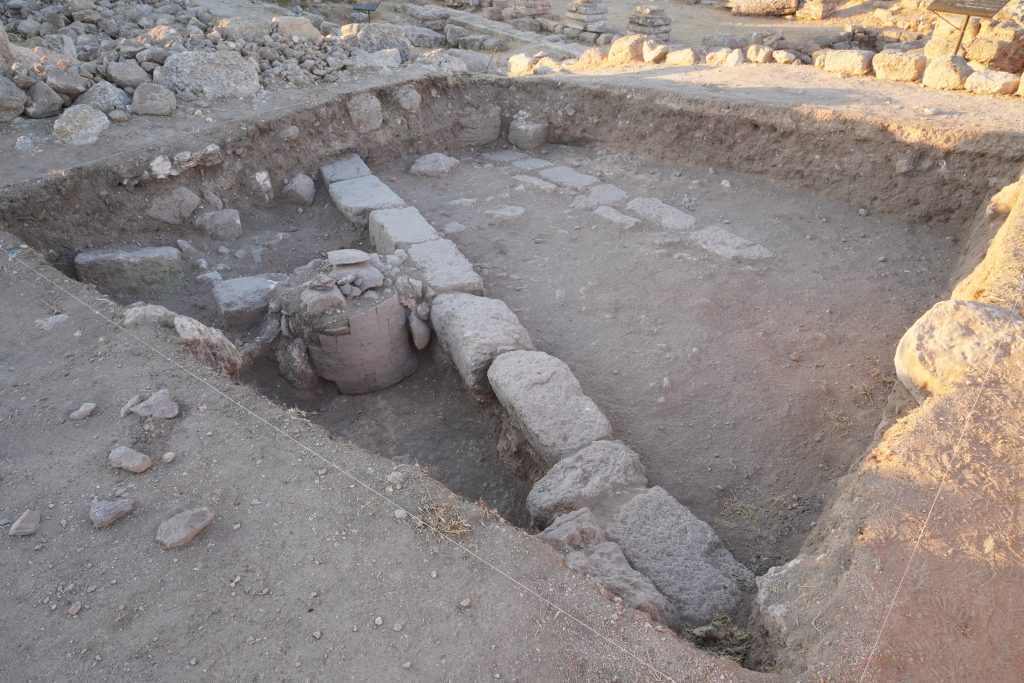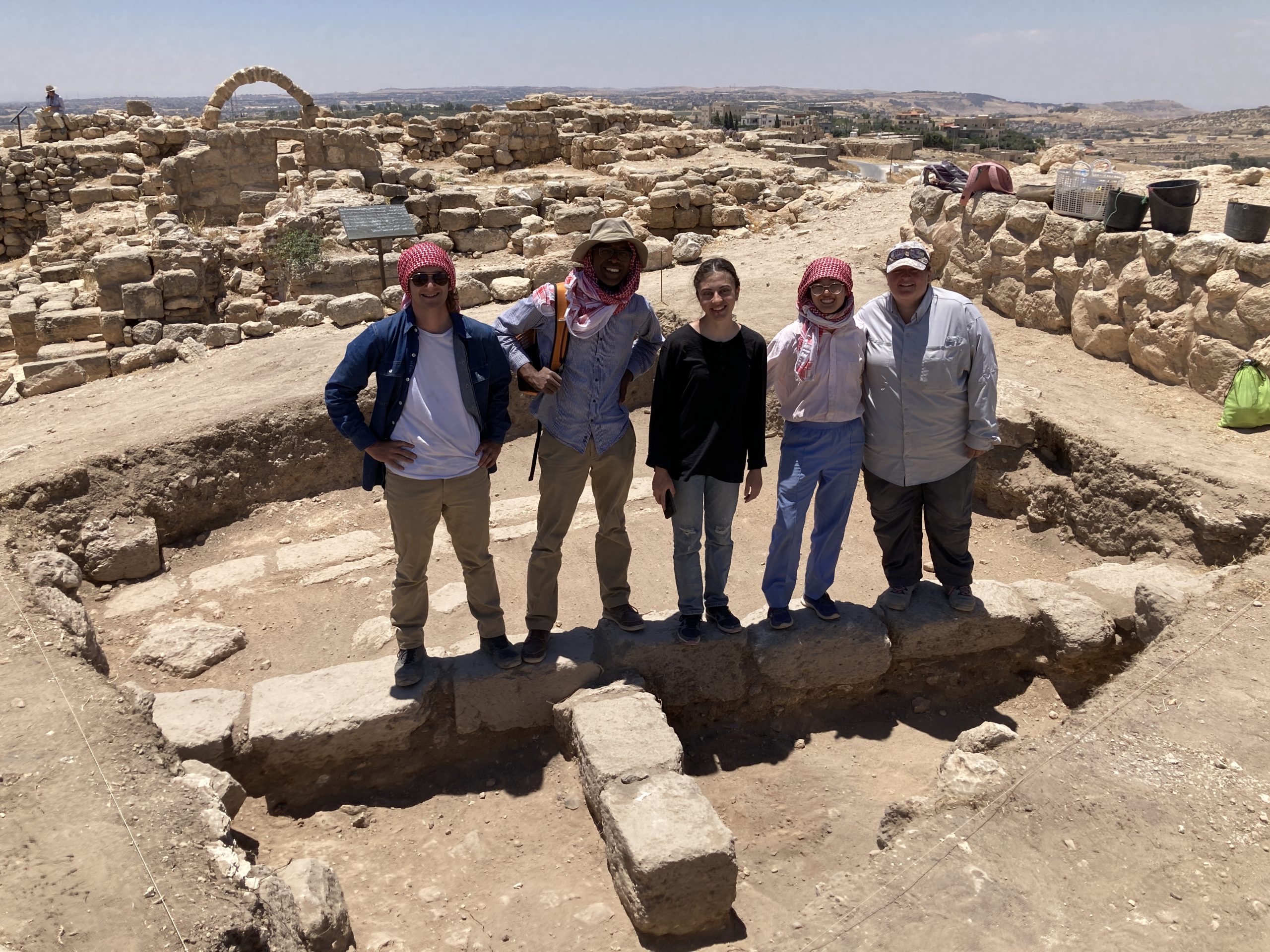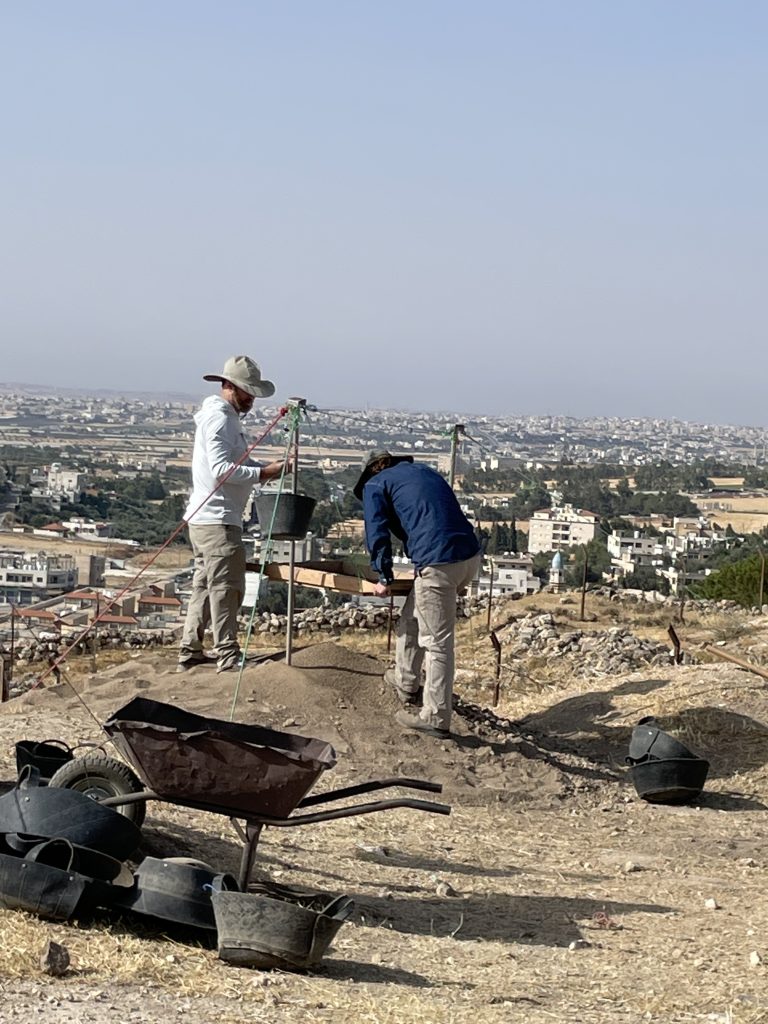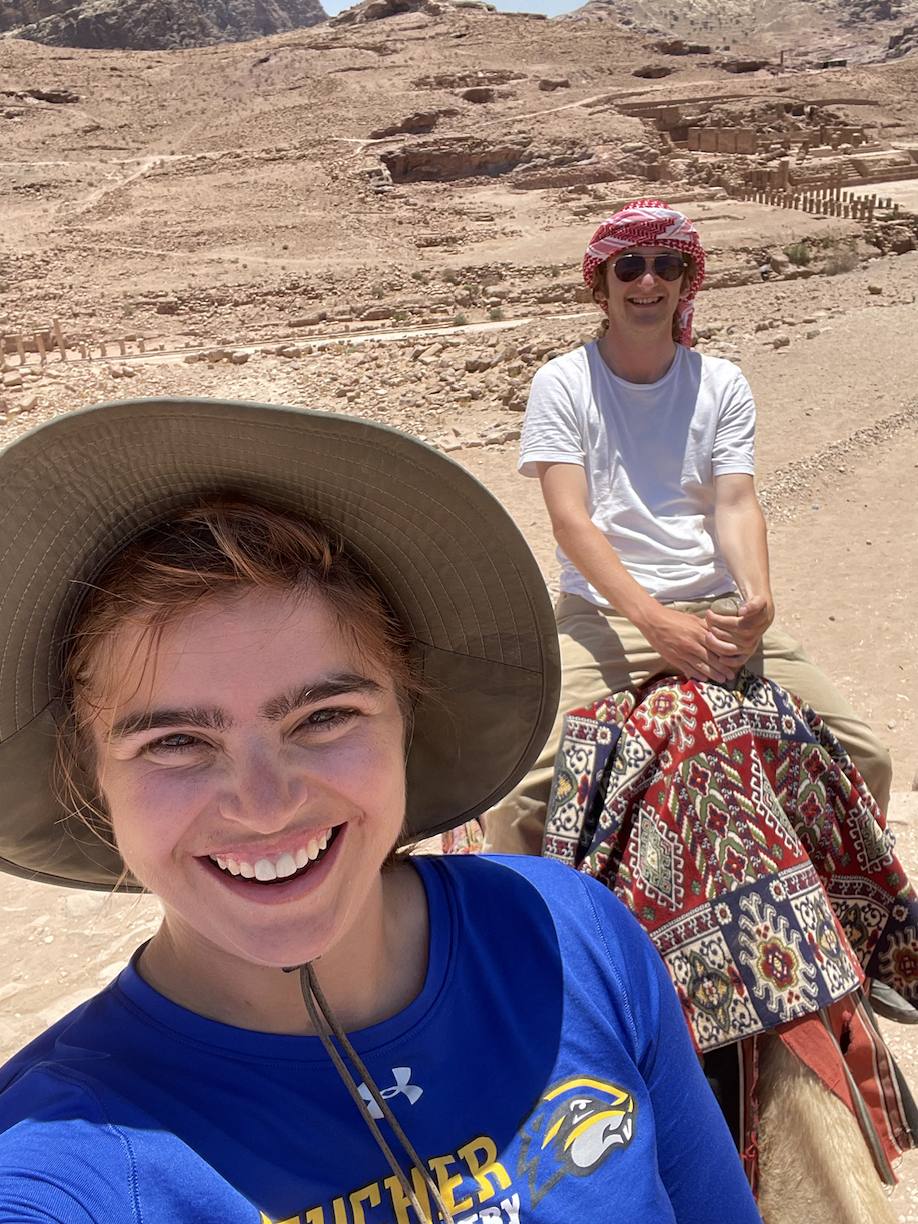
Search for the Lost Temple – 2022 Field Season at Tell Hisban
Colton Hodges, P.E. MacAllister Scholarship Recipient
In June of 2022, with help from ASOR and the P. E. MacAllister Scholarship I arrived in Jordan for my first archaeological field season. I would be working as a square supervisor at Tell Hisban. Tell Hisban is a site in Northwest Jordan near the capital of Amman. There are many layers of occupation left by many civilizations at Hisban, from the Assyrians all the way through to the Ottomans as well as occupation by more modern local Bedouin. However, inspired by research conducted in collaboration with Dr. Oystein LaBianca, the focus of my field would be into the Hellenistic and Roman eras. Hisban lies within the region historically occupied by the Decapolis. The Decapolis was a semi-formal political and mercantile league of cities, connected by their common Greek culture and language. As I presented in my poster presentation at the 2021 ASOR conference, we believe Hisban was part of a greater overall cultural program of the Decapolis.
The acropolis at Tell Hisban possesses a Byzantine church as well as the foundations of what has long been believed to have been a Roman public building. This public building has been hypothesized as being specifically a Roman temple. Our goal this field season was to excavate atop the acropolis and search for the floor of this public building; and to incorporate our findings into this overarching theory of Hisban within the cultural program of the Decapolis. Finally confirming that this public building was indeed a Roman temple would have gone a long way toward serving this theory.
Our excavations started, and removal of the modern topsoil revealed occupation by modern local Bedouin. However just below the topsoil we began to uncover walls. We found two non-parallel rows of walls made of repurposed Roman ashlar bricks. These came as a complete surprise to everyone on the dig and caused us to totally change our excavation plans. From here, we made the decision to excavate more closely along the northern row of walls. The sherds that were found imply heavy occupation during the Late Byzantine/Early Islamic eras. Of particular note among these sherds was a number of extremely uncommon triple-glazed, molded-relief Byzantine sherds, we believe to be imported from elsewhere in the Mediterranean.

The tabun saga continued however. In the days before we were about to leave for the season, another student and I went to visit a local shopkeeper and old friend of the Hisban excavations and archaeologists in Jordan. We told him about the oven we found and showed him photos of it. He instantly corrected us when we said it was a tabun, he said “no this is a zarb”. We weren’t yet aware of what a zarb was. A tabun is a round and stout oven with a large opening at the bottom, not unlike a pizza oven. A zarb is a straight round oven, generally submerged into the ground, in which food is lowered in from the top rather than the side. After we learned about this we all instantly agreed with our friend, it was a zarb after all and not a tabun. This was a really beautiful moment of local knowledge in action.
My first field season, as often happens in archaeology, did not go as planned. That being said, we made a number of very surprising discoveries. It is still unknown whether or not the building on the acropolis was indeed a temple or not, but our findings are important pieces that help put the story of Hisban together. This dig was an amazing experience for me both personally and academically and I look forward to returning to Hisban to continue our excavations on the acropolis.
Colton Hodges graduated from Andrews University in 2022. He received a Bachelors’ Degree in Behavioral Science with a concentration on Anthropological Archaeology. He plans to pursue a PhD in archaeology, and work towards his ultimate career goal of becoming a university professor and field researcher.
American Society of Overseas Research
The James F. Strange Center
209 Commerce Street
Alexandria, VA 22314
E-mail: info@asor.org
© 2023 ASOR
All rights reserved.
Images licensed under a Creative Commons Attribution-NonCommercial-ShareAlike 4.0 International License
COVID-19 Update: Please consider making payments or gifts on our secure Online Portal. Please e-mail info@asor.org if you have questions or need help.



